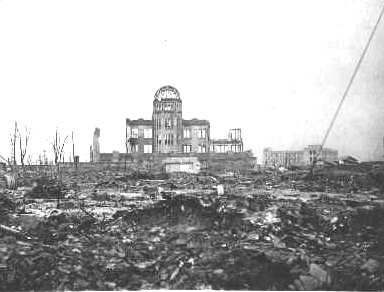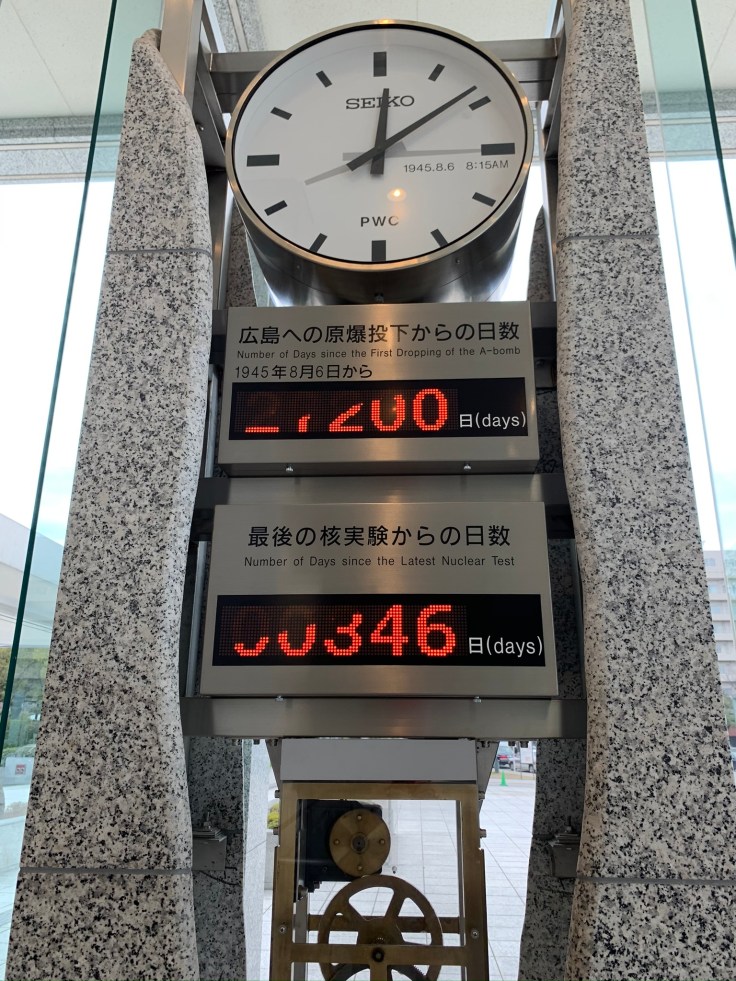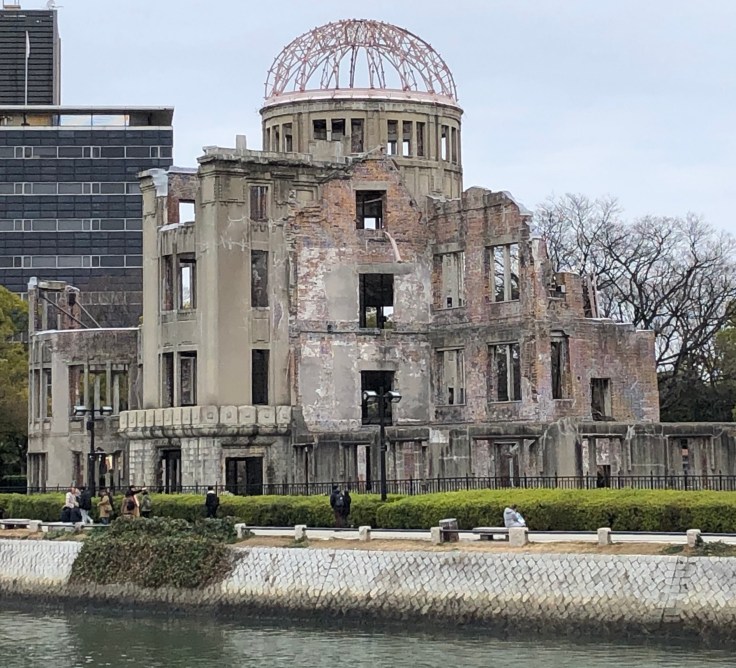Nuclear or Viral?

If you’re a baby boomer who grew up in the Cold War era, you might have believed our world could be destroyed by long range missiles and nuclear bombs.
The superpowers USSR and USA have signed many arms control and reduction treaties since the end of the Second World War and again after the fall of the Iron Curtain. The latest Strategic Arms Reduction Treaty (START) between Russia and the United States was renewed by Presidents Obama and Medvedev in 2010. It expires February 2021.
Using Weapons of Mass Destruction
Regardless of age, we all learned it was the dropping of two atomic bombs that ended World War II, and the horrible images of human suffering, death and destruction, and a mushroom cloud are forever burned into our memories.
Nazi Germany had surrendered in May 1945, but Imperial Japan would not. At 8:15 a.m. on Aug. 6, an American B-29 bomber dropped from 1,800 ft. the first wartime uranium-based atomic bomb, Little Boy, over the industrial port city of Hiroshima. The nuclear explosion wiped out 90 per cent of the city, killing 95,000 instantly, and another 100,000 over the next four months died from radiation poisoning. Still later, others would succumb to cancer.
Even though civilian deaths had outnumbered military (it was 6 to 1 in Hiroshima), Japan refused to surrender, perhaps gambling the U.S. threat of mass destruction could not happen because it did not have a second atomic bomb. Three days later at 11 a.m. on Aug.9, the U.S. detonated another, bigger, implosion-model plutonium bomb, Fat Man, on Nagasaki. The horrific blast from the equivalent of 21 kilotons of TNT produced the unforgettable mushroom cloud that rose 60,000 ft. into the air.
Soviet troups were on their way when Japan surrendered unconditionally August 15. Three percent – 70 million – of the global population of 2.2 billion died in WWI.
Visiting Hiroshima
While in Japan in January 2020, we took a train to Hiroshima and visited the Peace Memorial Park and the detonation point of the atomic bomb. Across the Motoyasu River from ground zero stands the skeleton of a building blasted by Little Boy. The Genbaku Dome is the only recognizable structure remaining. Renamed the A-Bomb Dome, the ruins have been declared a UNESCO World Heritage Site.
I visited the Peace Memorial Museum and stopped in front of the Peace Watch Tower in the lobby. It has two clocks, one that counts the days since the first atomic bomb, and the second clock counts down the days since the last nuclear test. The Peace Watch Tower is both a reminder and a testament to the Japanese people’s desire to abolish nuclear weapons.

Today, Russia and the United States have more than 90 per cent of the world’s 14,200 nuclear weapons. Our current bi-lateral START nuclear disarmament treaty expires in 11 months. Yet the sitting presidents in Russia and the United States talk instead of violations and withdrawals. Last year, America tested its nuclear weapons. Twice. The peace clock resets.
Nuclear or germ warfare?
Just the other day, I was watching Bill Gates on TV, and he hinted that the greatest threat to our world may not be a nuclear war, but a virus. Could a new virus, like the COVID-19, act like a biological weapon, spreading highly contagious germs worldwide through people, making us–humans–the weapons of mass destruction?
SARS, if you remember, was a novel coronavirus originating in Beijing, China. It spread to 29 countries between 2002 and 2003, infecting 8,097 worldwide, resulting in 774 deaths. The case numbers are small, but the fatality rate was 9.6 per cent.
On March 27, 2020, Canada recorded 55 deaths and 4757 cases of COVID-19, surpassing the 44 SARS deaths within two months of this outbreak.
It’s spreading quickly. On March 28, there were 600,000 infected in 177 countries and 28,000 deaths. On March 29 there were 741,030 cases and 35,097 deaths worldwide. The U.S. replaced China and Europe as the new epicenter with 142,364 infected and 2467 deaths March 30. A news report says one person is dying every 17 minutes in New York City. And we can only guess how many symptomatic or asymptomatic have not been tested or are waiting for results.
We are in radical, uncharted waters. But so, I must add, were the young farmers and shopkeepers — and carpenters like my grandfather — who volunteered to fight the enemy at the start of WWI, not knowing they would be still fighting in trenches for another six years. By the end of the Great War, 37 million civilians and military personnel died.
And then the unthinkable happens. To a world brought to its knees by the global war, a new villain strikes, infecting 500 million people — about 30 per cent of the 1.8 billion population — and killing an estimated 30-40 million people between the spring of 1918 and summer of 1919. The flu, first reported in Spain, is sometimes called the ‘forgotten pandemic’ because it came on the heels of the war.
But that was then.
Staying Alone Together
If we are to fight this novel germ war together, then we need to act like soldiers and obey our commanding public officers. We can’t be instruments of this virus. Staying home indefinitely may be the hardest emergency mandate to obey, but it’s probably the most critical order you will ever be given.
Until we get a vaccine, which could be a year from now, physical distancing is still the best way to protect you and others. I get that it’s incredibly hard to do, especially in more densely populated cities and countries.
New York State has 19 million people, and its biggest enemy, says their governor, is density. New York City, with a population of 8.5 million, has 26,403 people per square mile. Manhattan has 66,950 people per sq mi.
Canada has one of the lowest population densities in the world. Toronto, our largest city, has 4,150 people per sq km. In my mid-sized city, Calgary has a population density of 1,329 people per sq km.
So I say to my fellow Canadians who are on the frontlines, in mandatory quarantine or self-isolating, keeping two metres apart when walking or grocery shopping, taking online yoga and self-enrichment classes, touring museums virtually, studying, planning their child’s drive-by birthday parties, hosting FaceTime happy hours: “Thank you, Canada. We can do this.”




Like it. Timely historical parallels and an important message. Mary Anne G.
LikeLike
Hi Mary Anne. I hope you are staying well in place. Take good care.
LikeLike